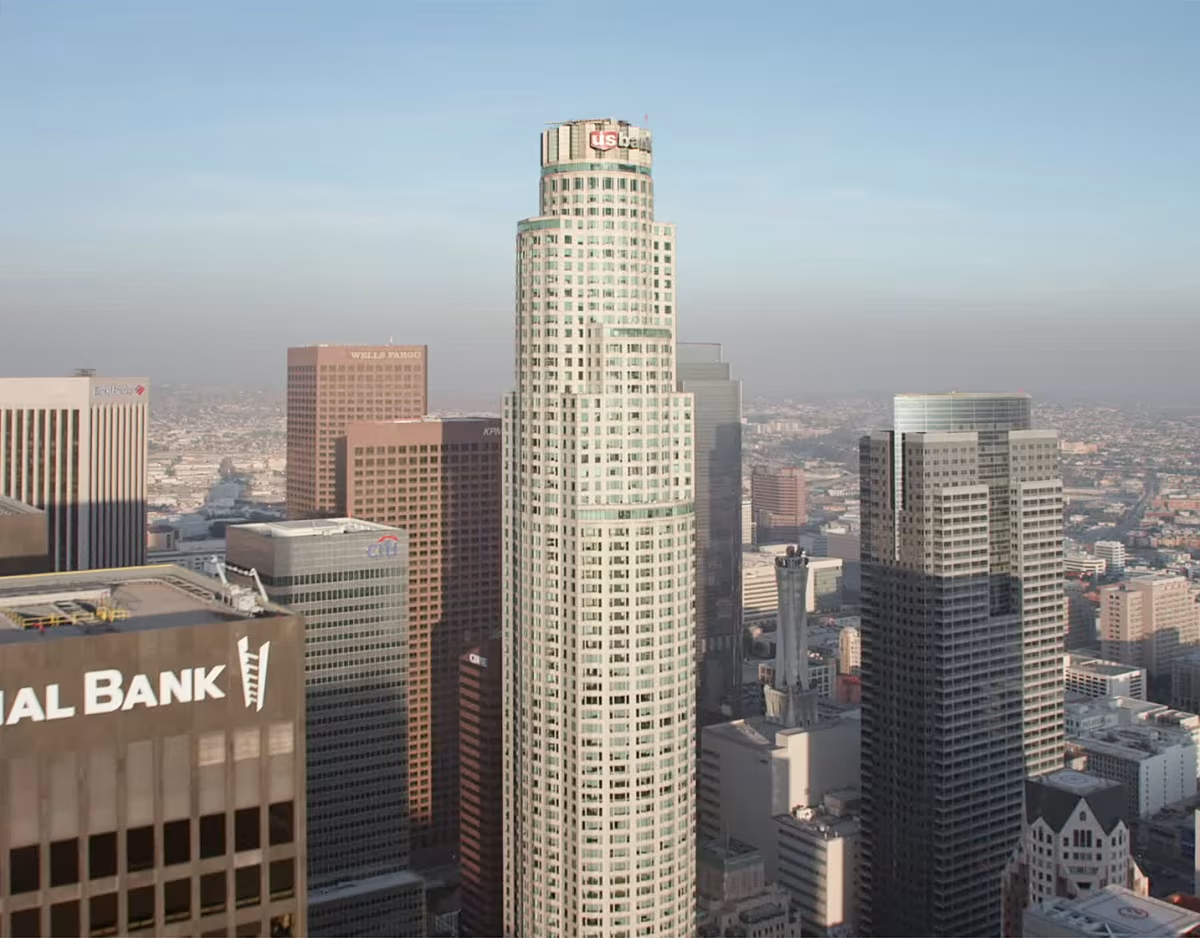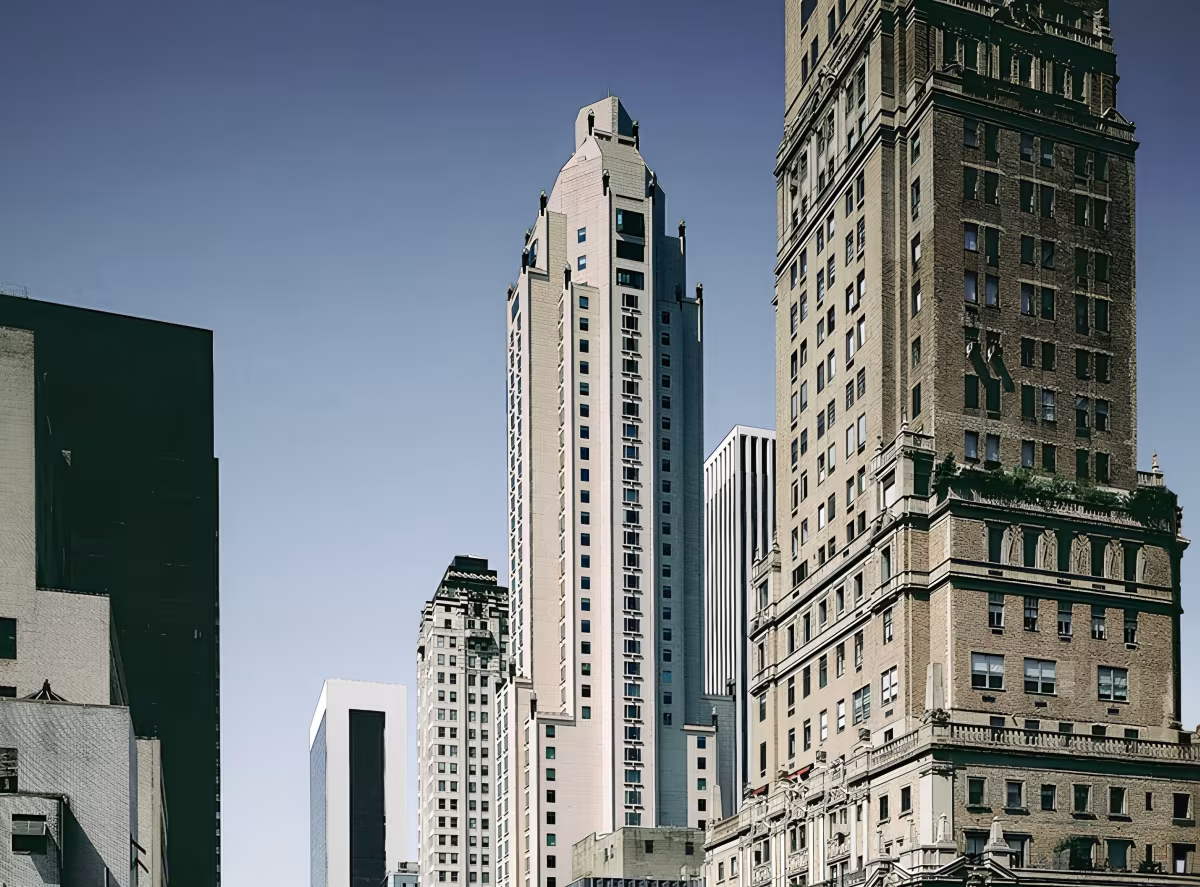U.S. Bank Tower vs Four Seasons Hotel New York


Comparing the U.S. Bank Tower and the Four Seasons Hotel New York is an interesting exercise, because even though they are located in different cities (Los Angeles, CA and New York, NY), both were designed by Pei Cobb Freed & Partners and finished within within 4 years of each other. This gives us the chance to see how the same architect's ideas were expressed in different urban contexts almost simultaneously.
Height & Size
The U.S. Bank Tower is clearly the larger tower of the two, both in terms of height and number of floors. It rises to 1017ft (310m) with 73 floors above ground, while the Four Seasons Hotel New York reaches 682ft (208m) with 52 floors above ground.
U.S. Bank Tower also offers more total built-up area, a total fo 1,754,516 sqf (163,000m2), which is about 1,227,085 sqf (114,000m2) more than what the Four Seasons Hotel New York offers.
The U.S. Bank Tower also concentrates more floor area on its site, indicating a higher floor area ratio.
Of course, each project may have faced different briefs or regulatory constraints, which we don't really know about and could also explain the outcome.
Architectural Style
Both the U.S. Bank Tower and the Four Seasons Hotel New York were designed in line with the aesthetic conventions of the Postmodernism style.
The Four Seasons Hotel New York was designed at a moment when the Postmodernism style was already in decline, making it more of a lingering expression of the movement. In contrast, the U.S. Bank Tower was built when the style still carried greater cultural weight.
Uses
The U.S. Bank Tower is primarily commercial, while the Four Seasons Hotel New York is primarily hotel.
The Four Seasons Hotel New York incorporates a 5-star hotel with 368 rooms. More information is available at the official website.
The U.S. Bank Tower also provides 1396 parking spaces.
Structure & Facade
The two buildings opted for different structural and facade solutions.
The U.S. Bank Tower uses a Framed Tube In Tube system, which combines a strong central core with a perimeter tube of columns, while the Four Seasons Hotel New York uses a Frame system, that relies on a regular grid of columns and beams to sustain its weight.
And when it came to the facade, the Curtain Wall went with a Curtain Wall facade, which uses a lightweight glass curtain wall hung from the structure, while the Four Seasons Hotel New York opted for a Masonry facade, that features a heavy masonry skin that gives it a more clasical look.
| U.S. Bank Tower | Four Seasons Hotel New York | |
|---|---|---|
| Pei Cobb Freed & Partners | Architect | Pei Cobb Freed & Partners |
| 1987 | Construction Started | 1990 |
| 1989 | Year Completed | 1993 |
| Postmodernism | Architectural Style | Postmodernism |
| Commercial | Current Use | Hotel |
| 73 | Floors Above Ground | 52 |
| 310 m | Height (m) | 208 m |
| 163000 | Built-up Area (m²) | 49000 |
| Framed Tube In Tube | Structure Type | Frame |
| Concrete And Steel | Vertical Structure Material | Concrete |
| Concrete | Horizontal Structure Material | Concrete |
| No | Facade Structural? | Yes |
| Glass, Aluminum | Main Facade Material | Limeston, Glass |
| Maguire Partners | Developer | EIE Regent Av Corporation |
| CBM Engineers | Structural Engineer | Rosenwasser/Grossman Consulting Engineers |
| Gensler | Interior Designer | M.I.Pei, Chhada, Siembieda & Partners, And Betty Garber Desing |
| CA | State | NY |
| Los Angeles | City | New York |
| 633 West Fifth Street | Address | 57 East 57th Street |